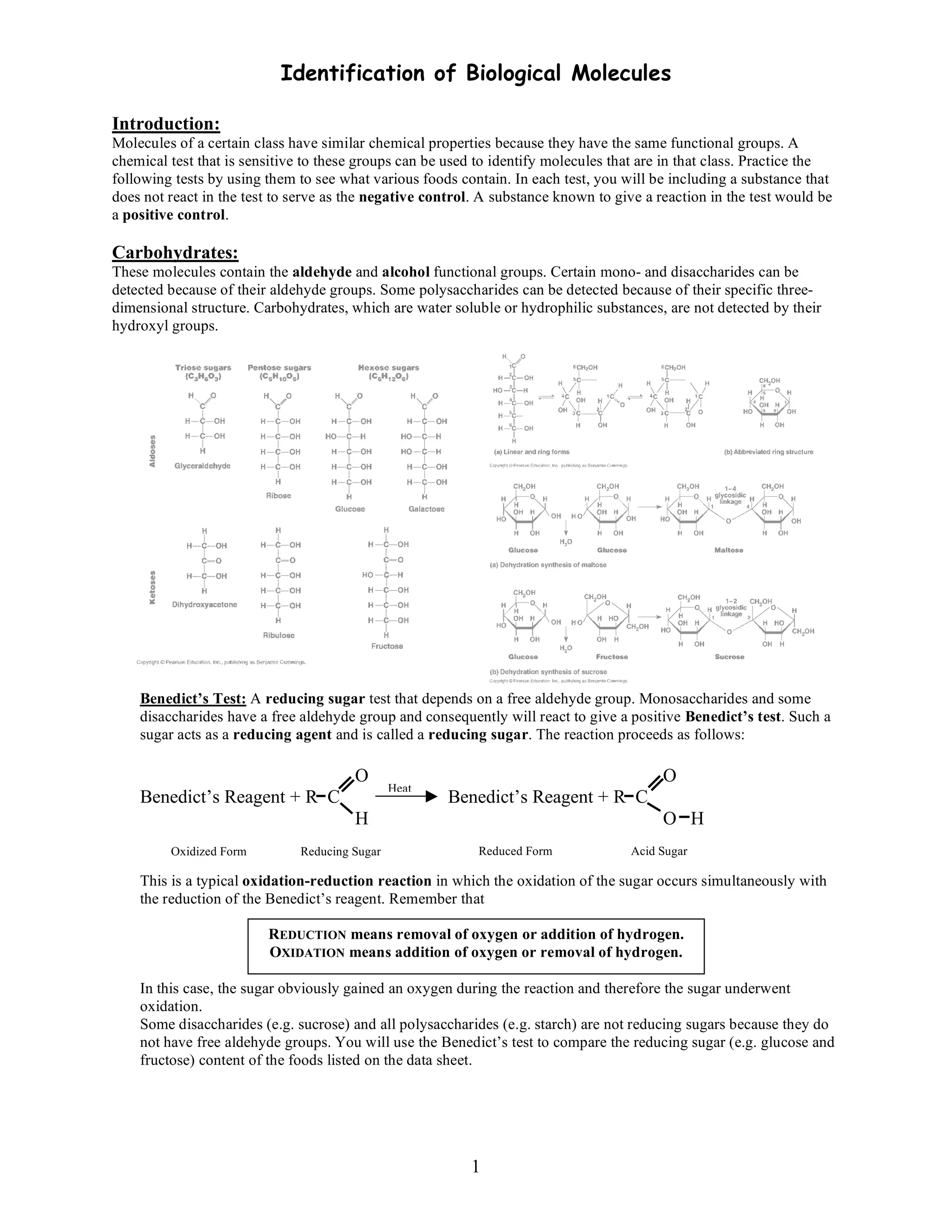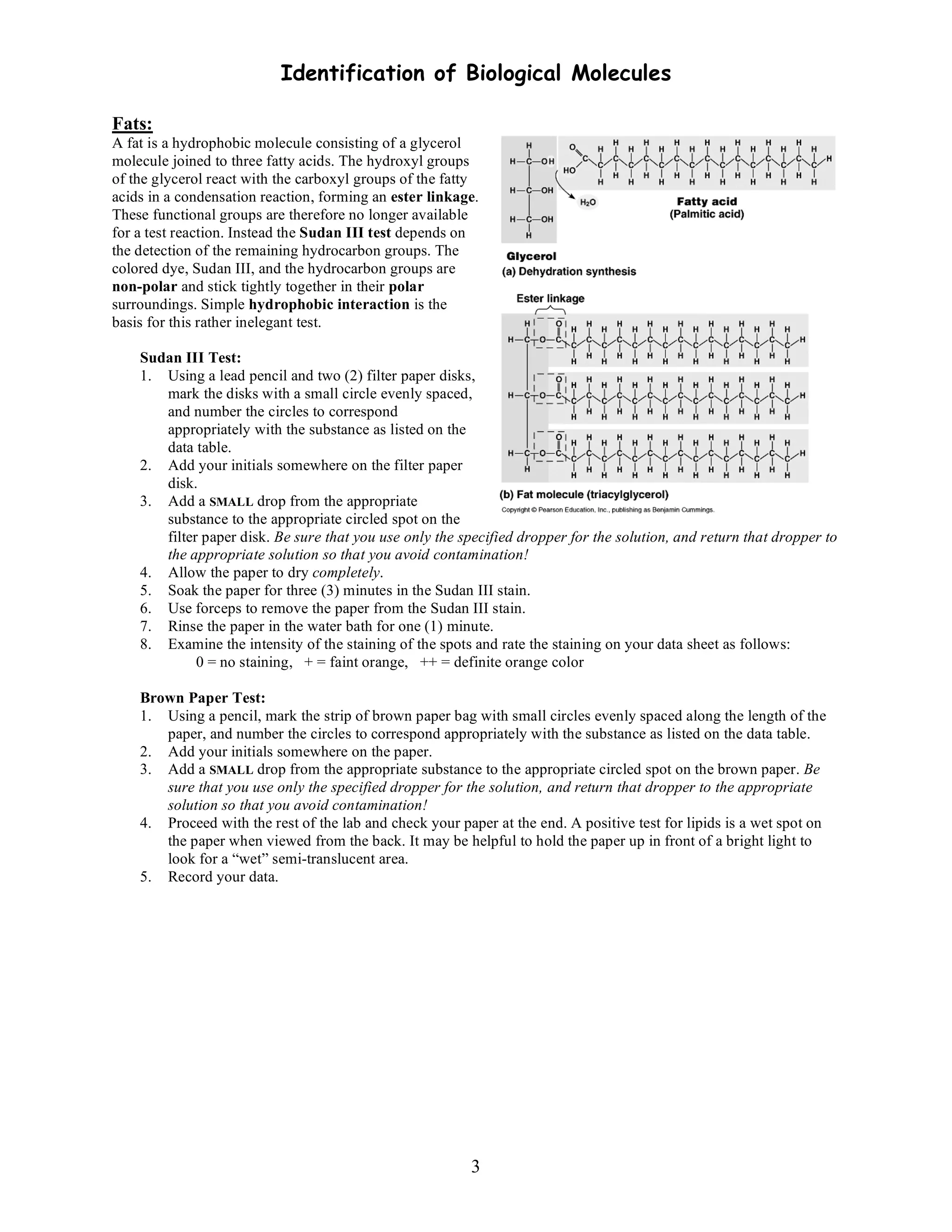This document describes several tests used to identify biological molecules including carbohydrates, lipids, and proteins in foods. Carbohydrates are tested using Benedict's test to detect reducing sugars and the iodine test to detect starch. Lipids are tested using the Sudan III stain and brown paper tests to detect hydrophobic regions. Proteins are tested using the Biuret test to detect peptide bonds. Students will perform each test on samples of water, syrup, potato, tofu, vegetable oil, oatmeal, avocado, white grape juice, lettuce, and chicken broth to identify which molecules are present in each food.







